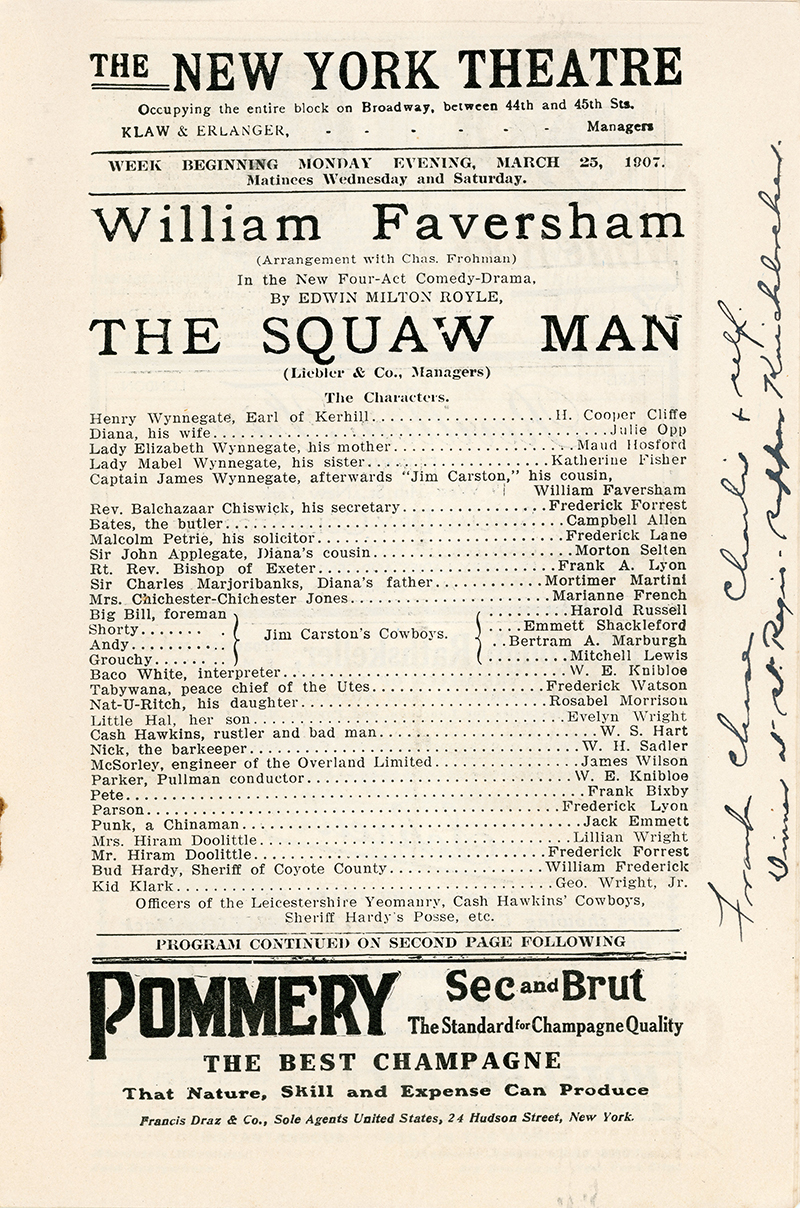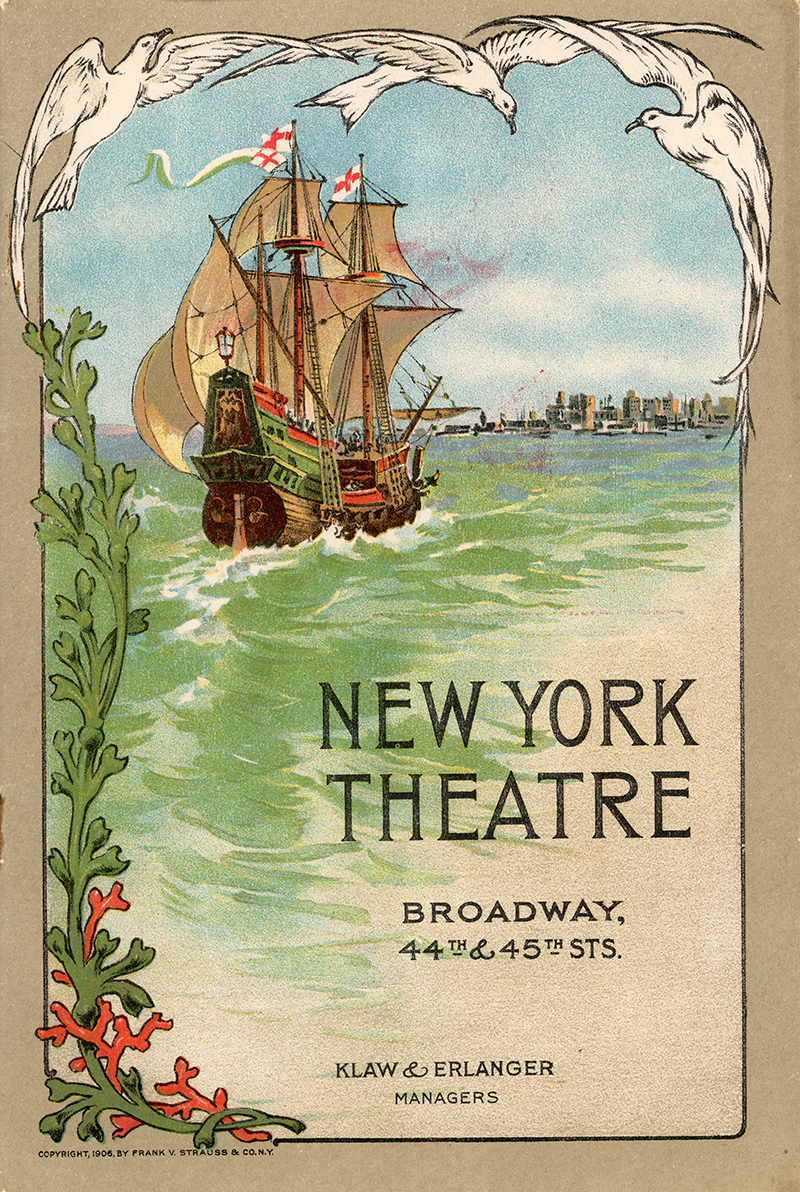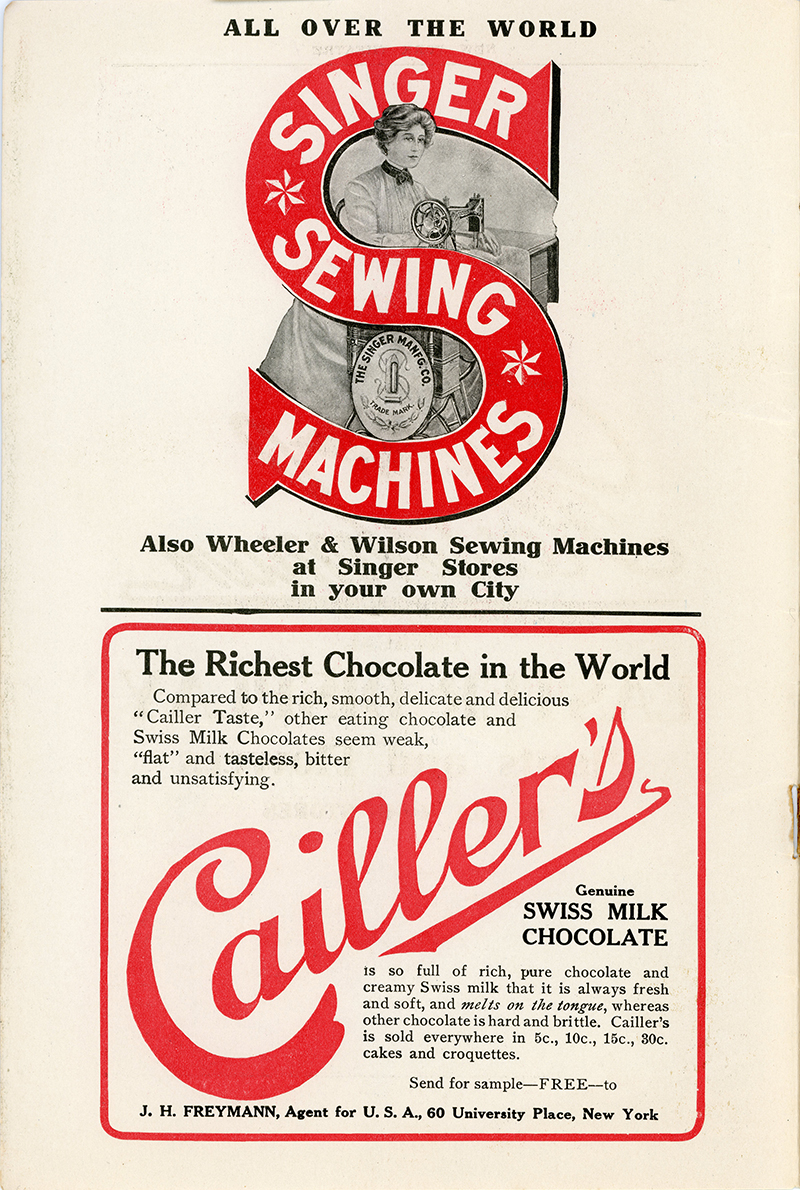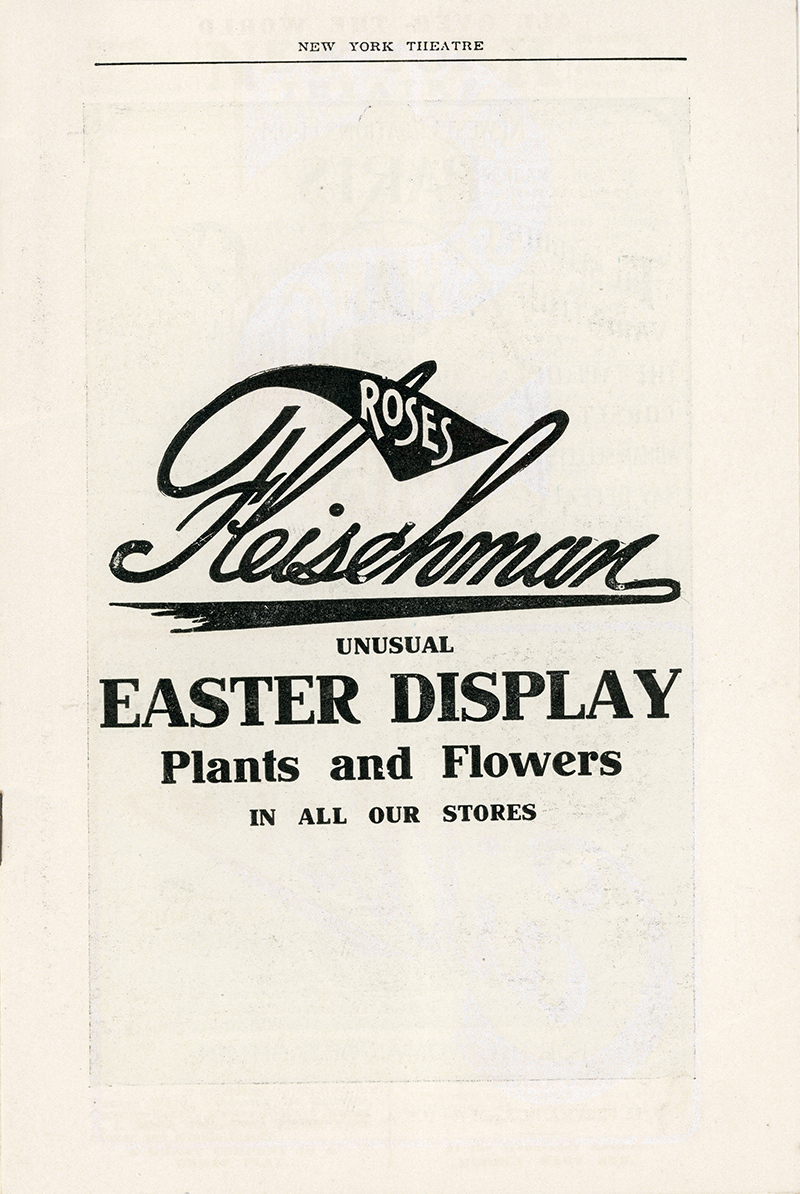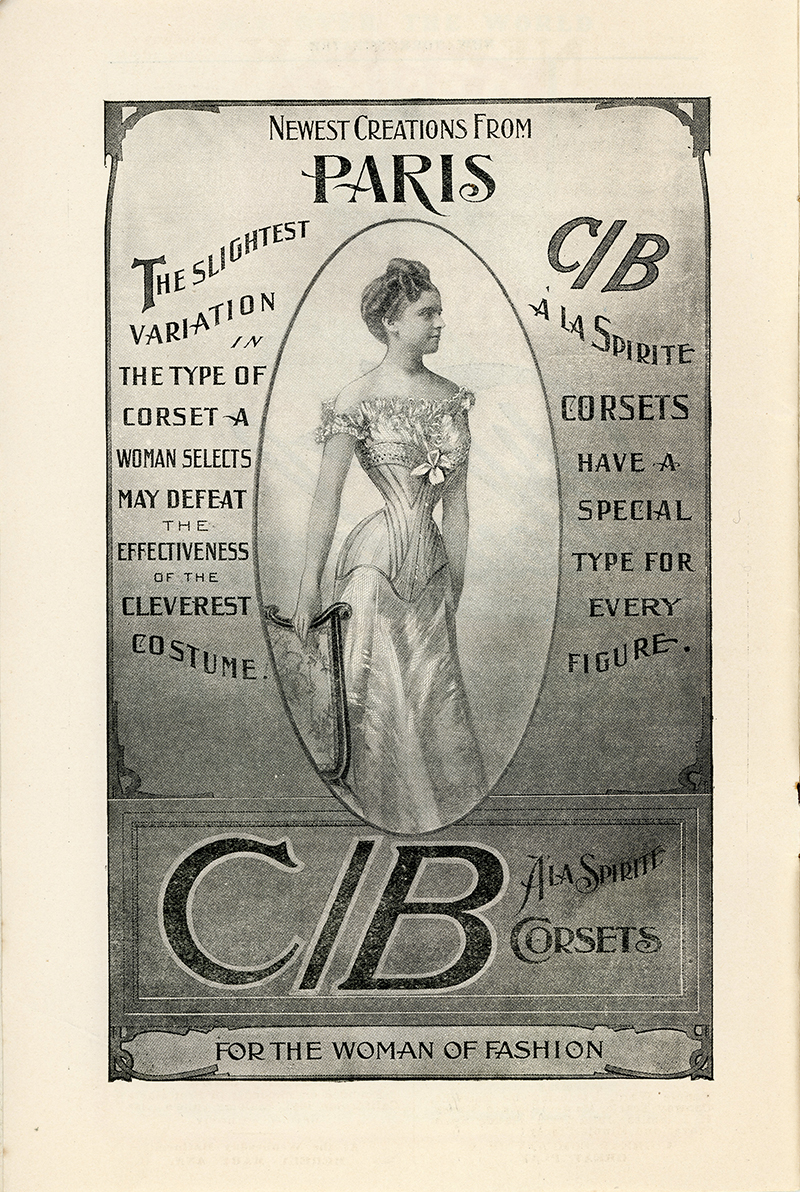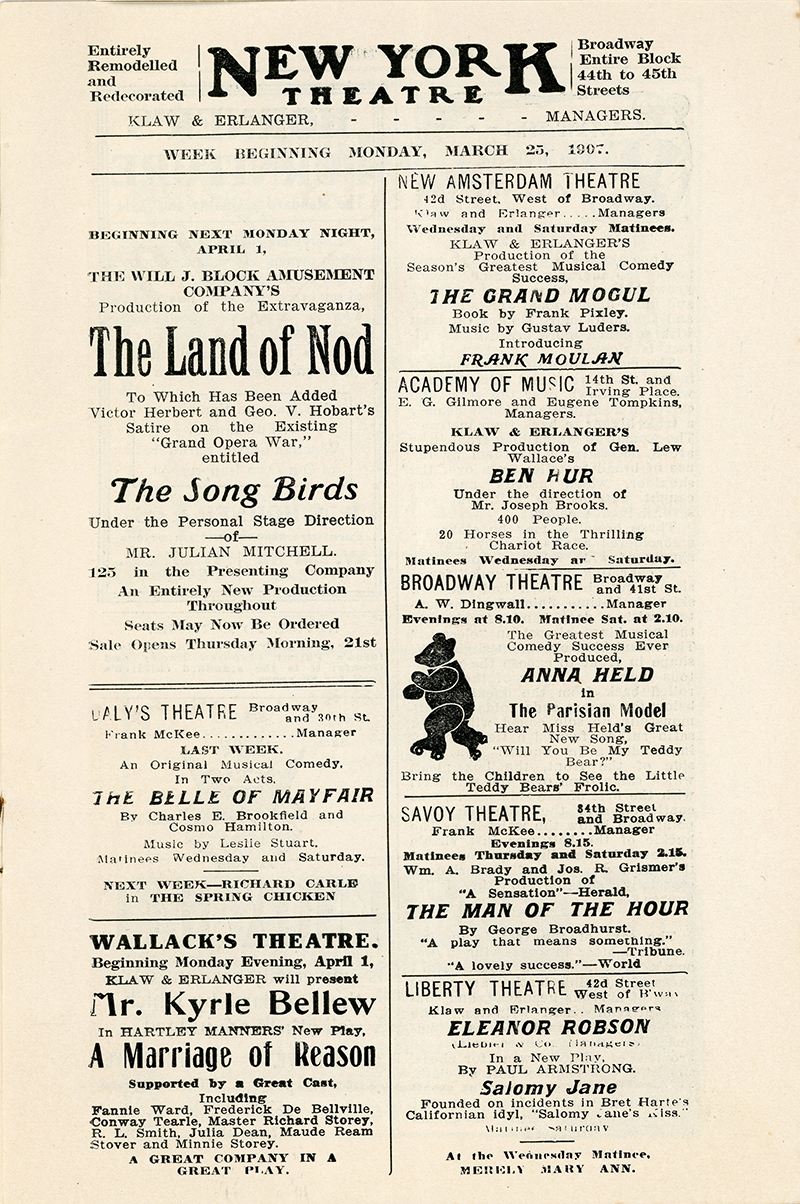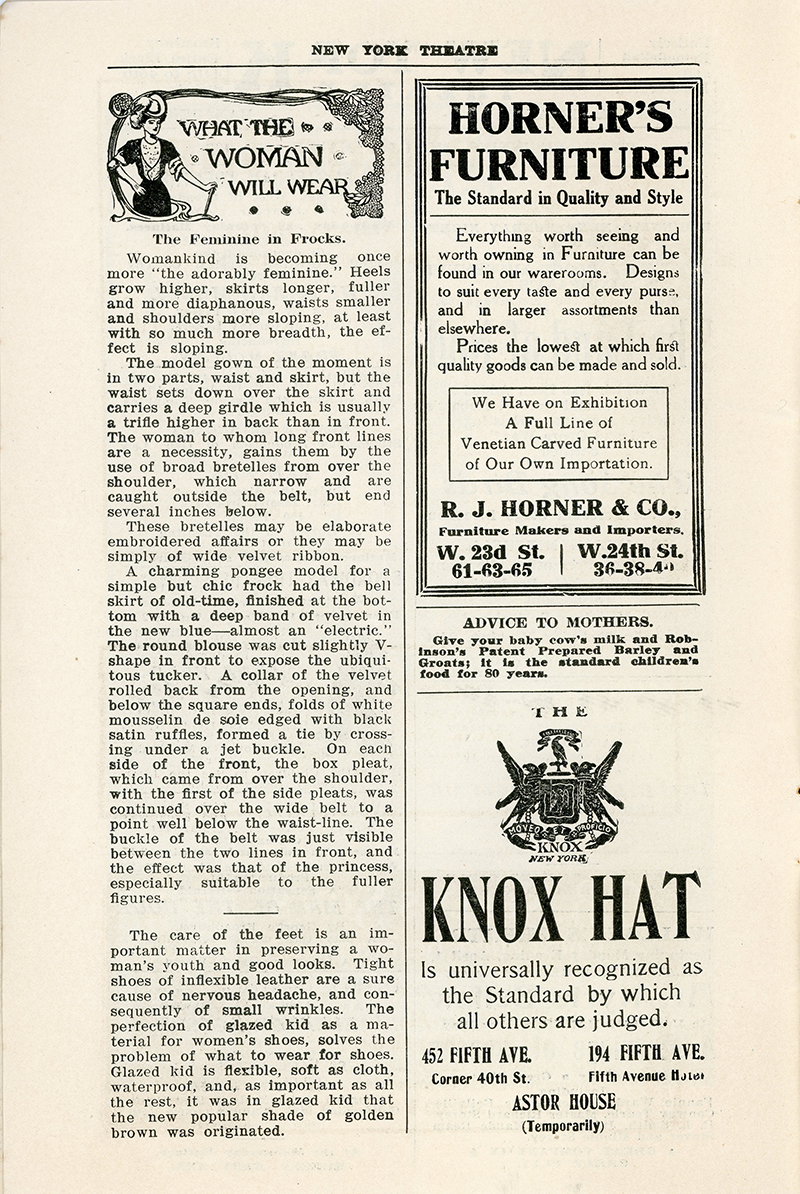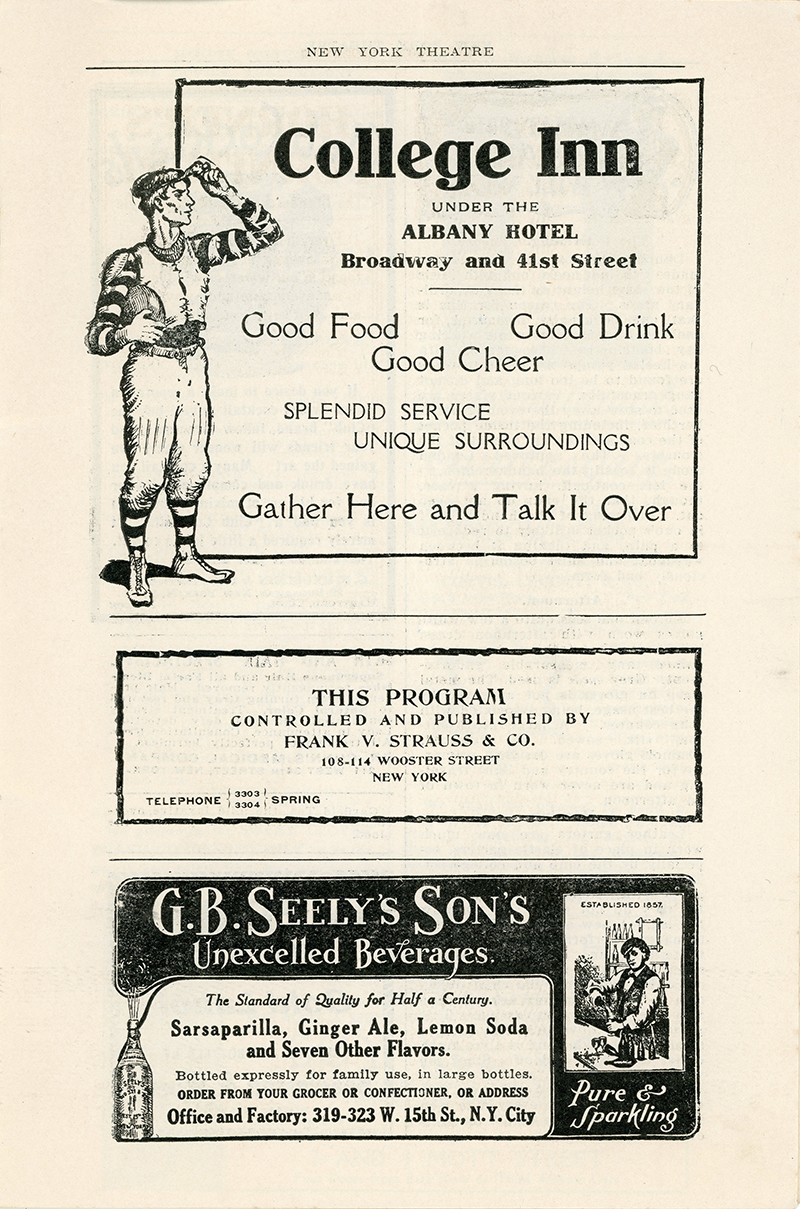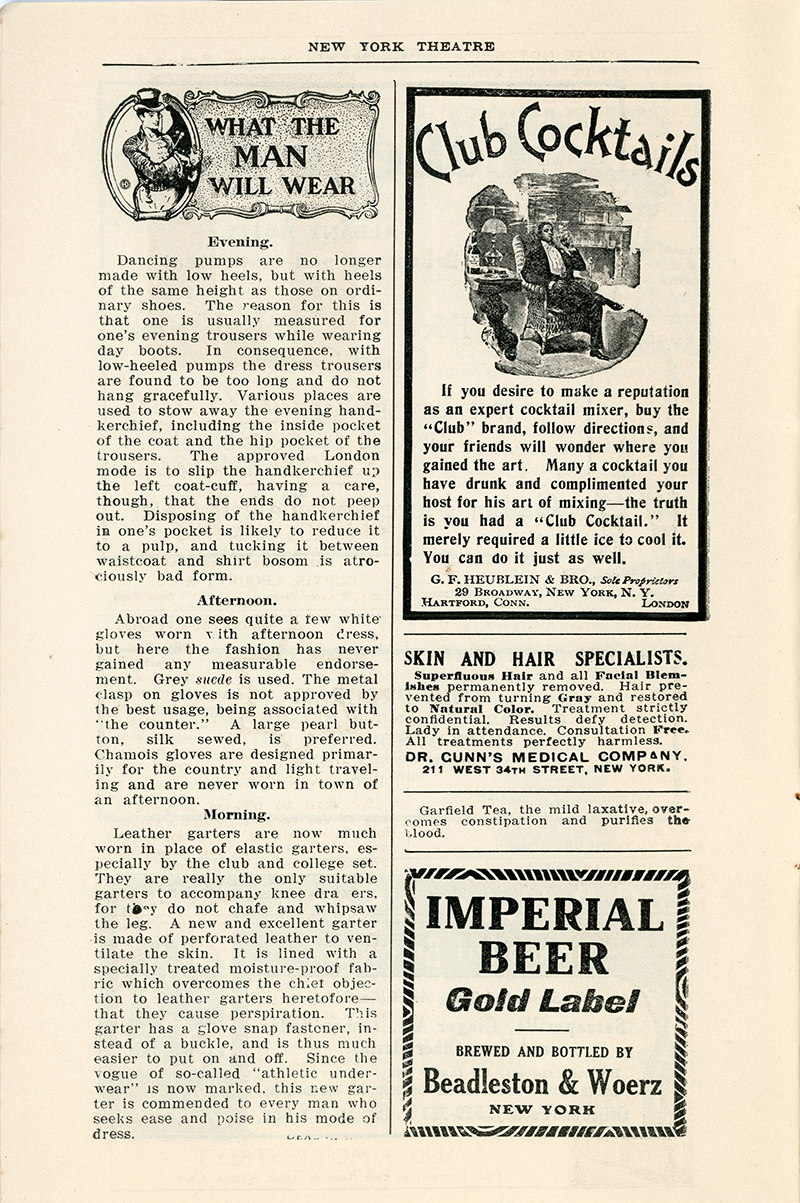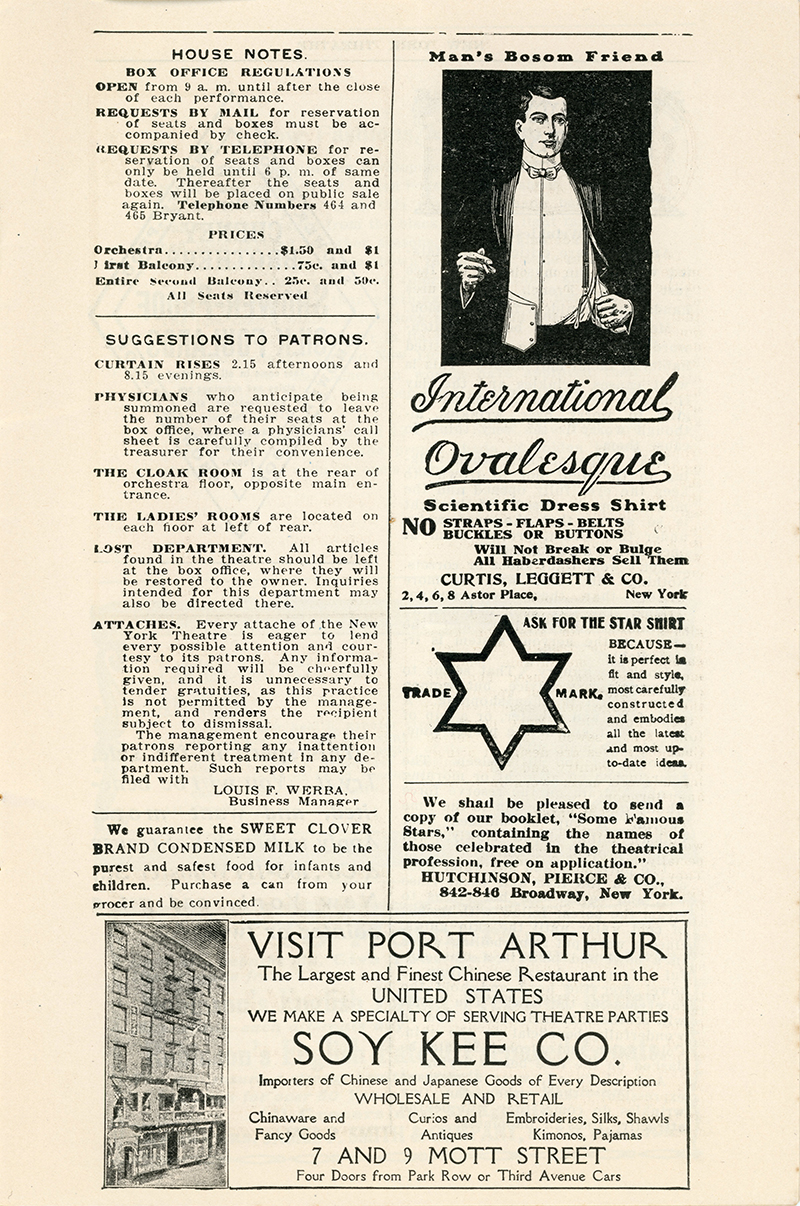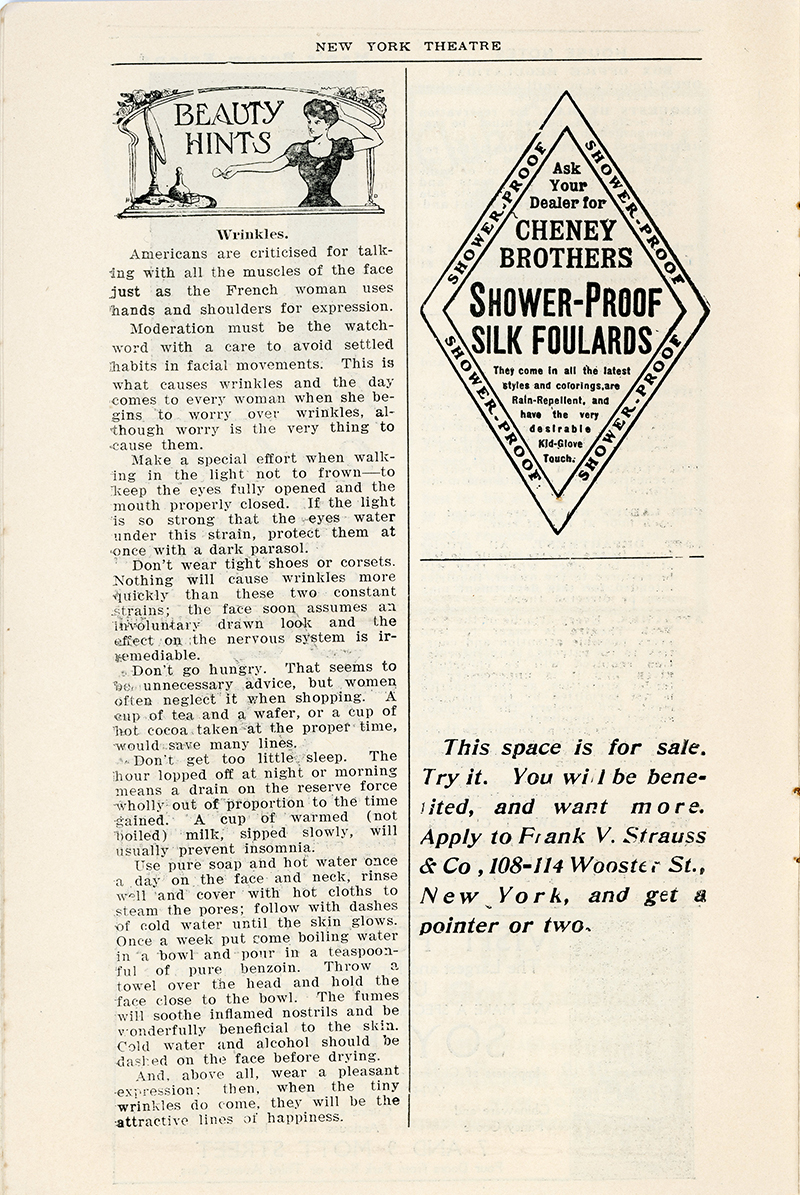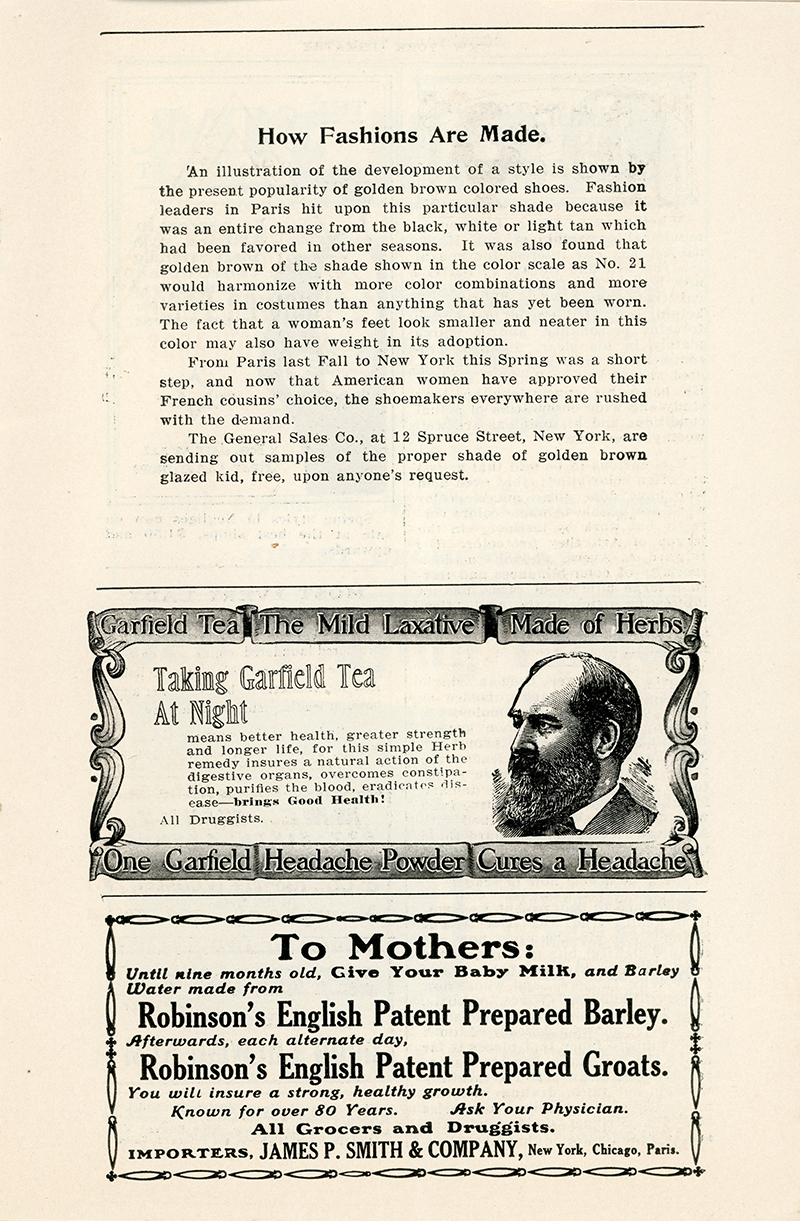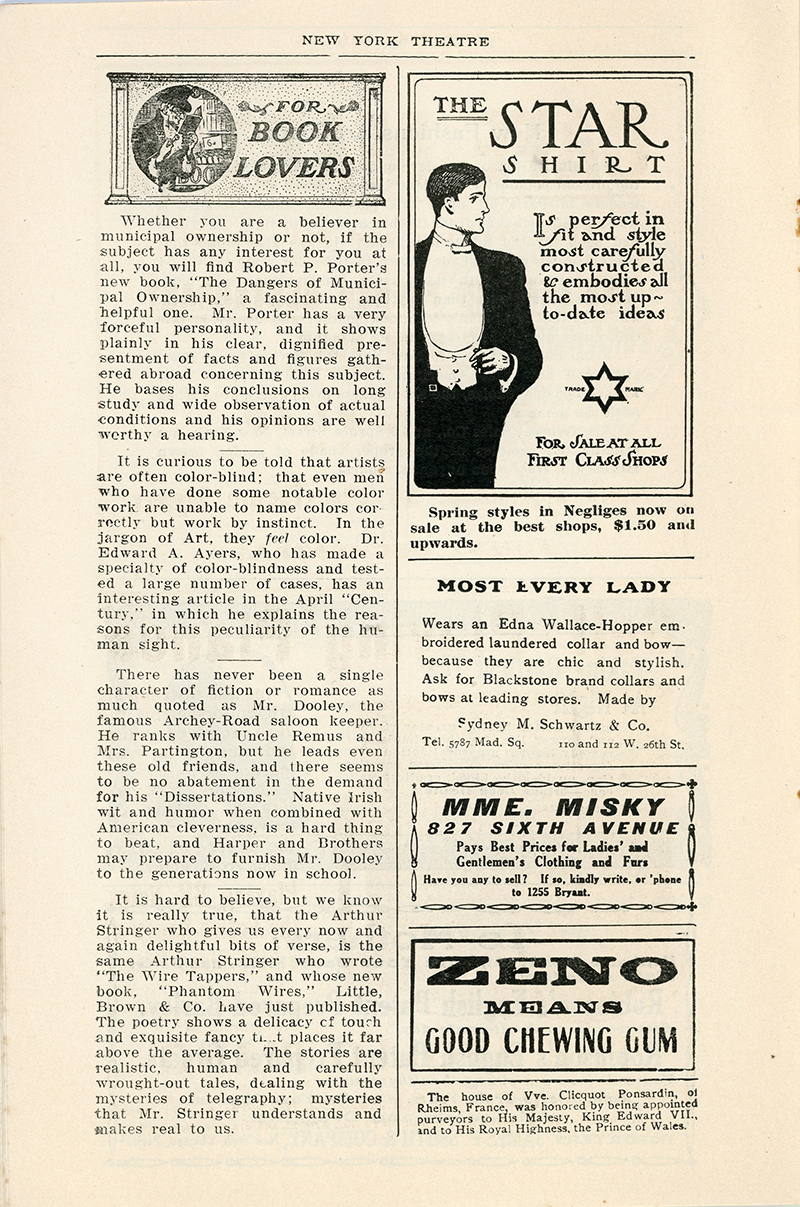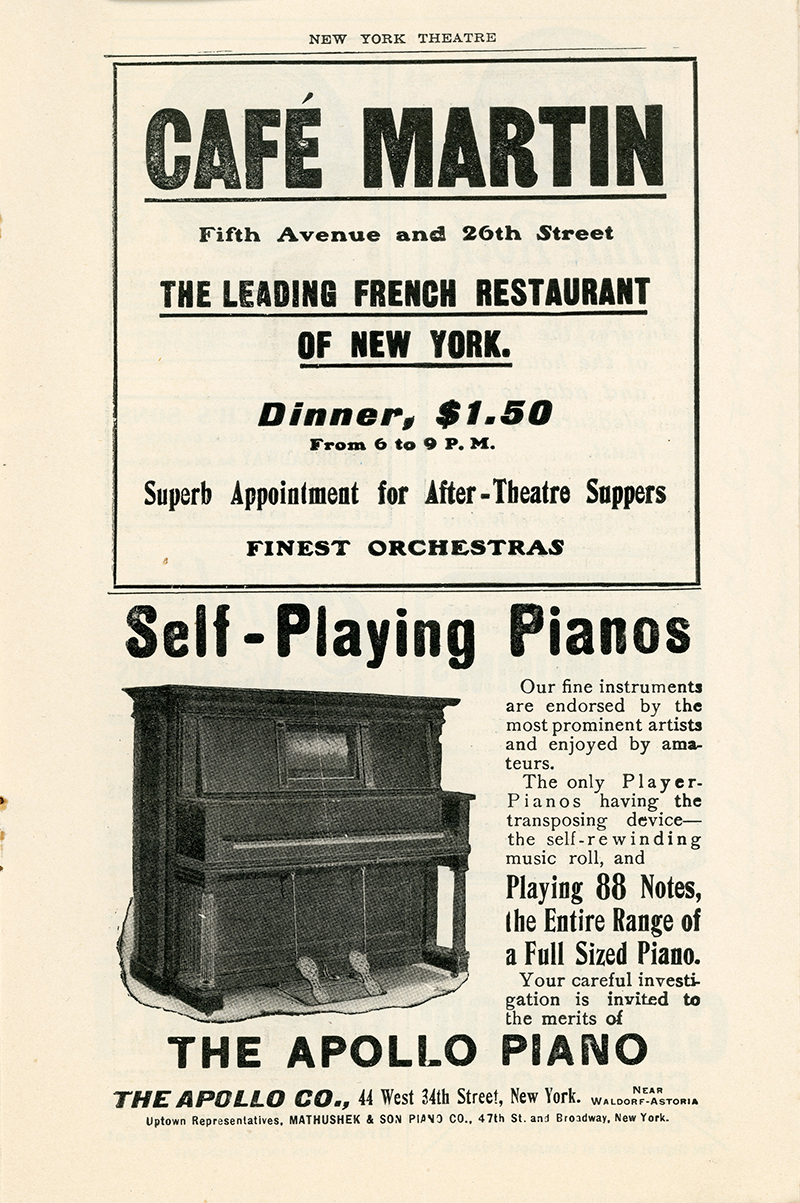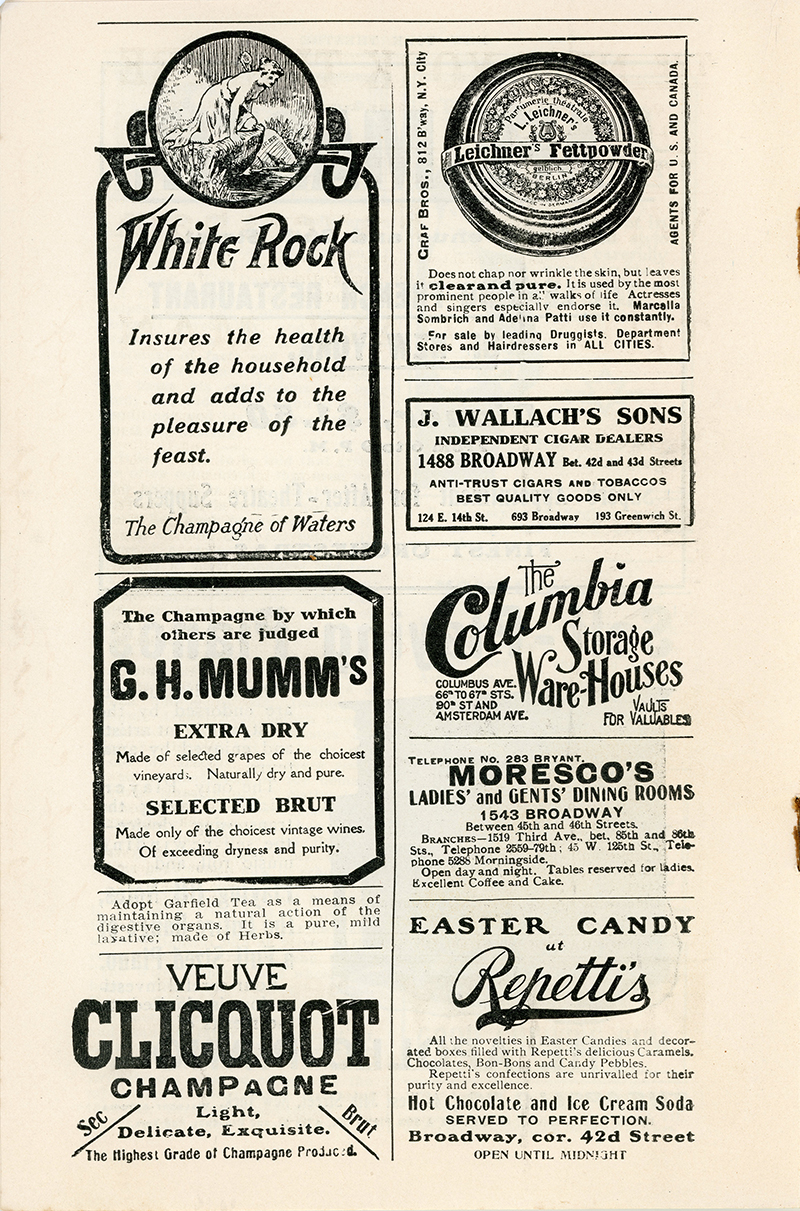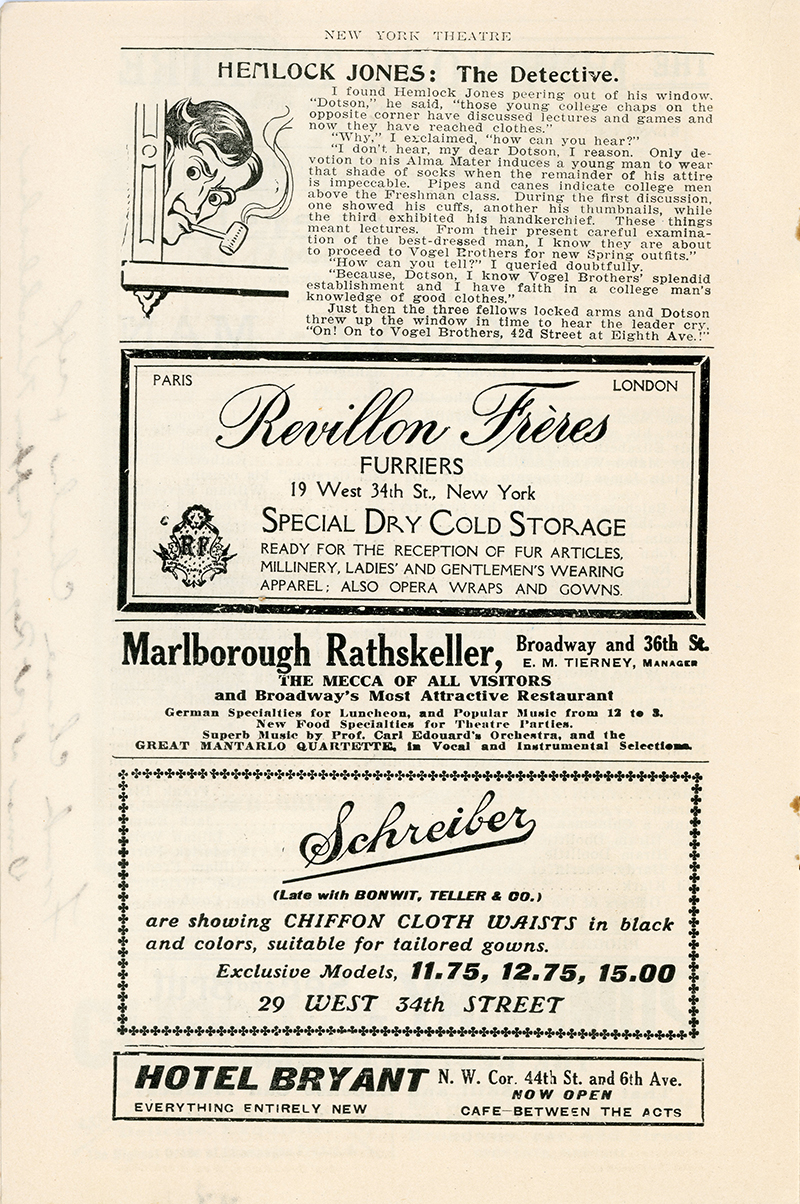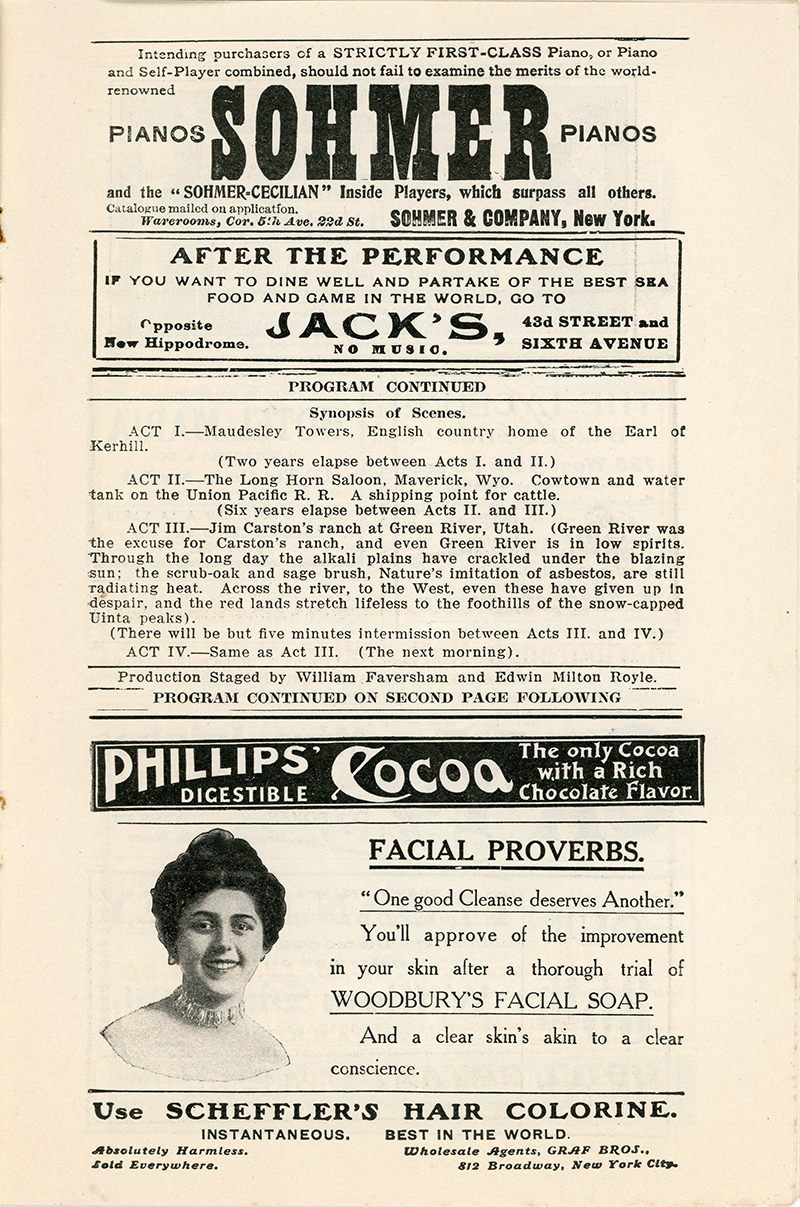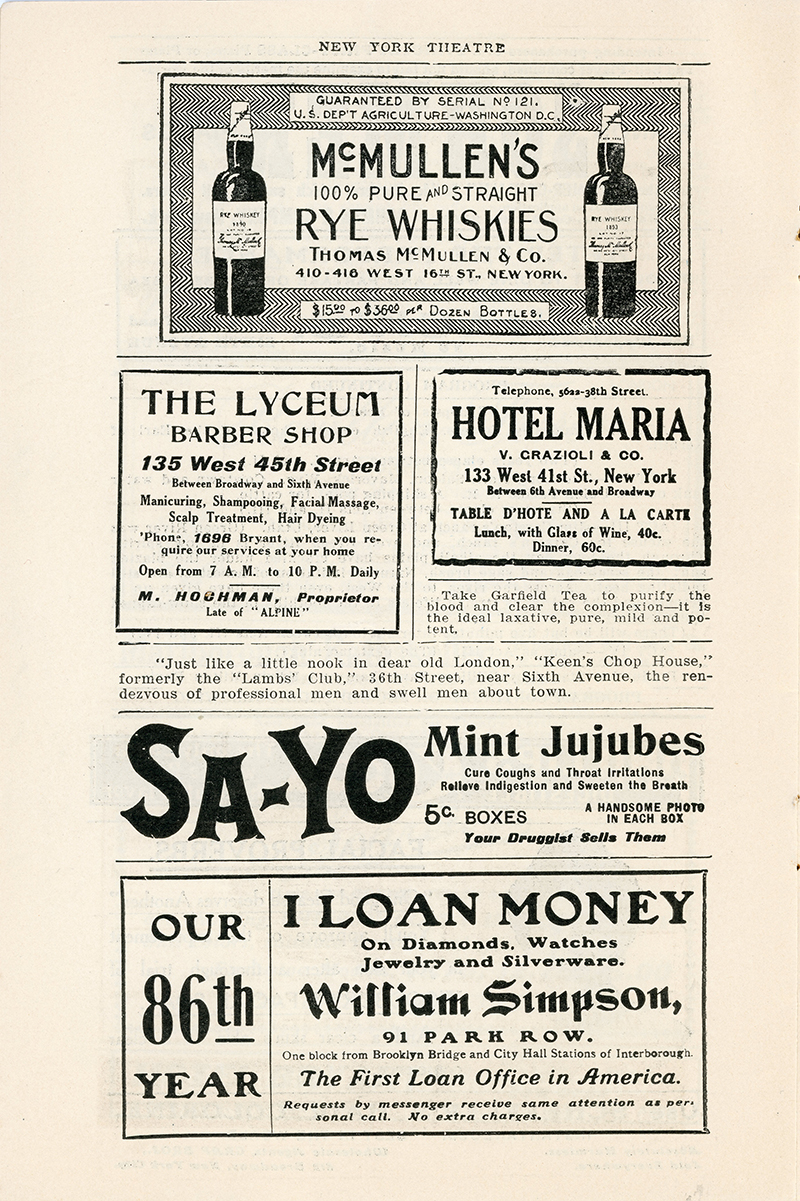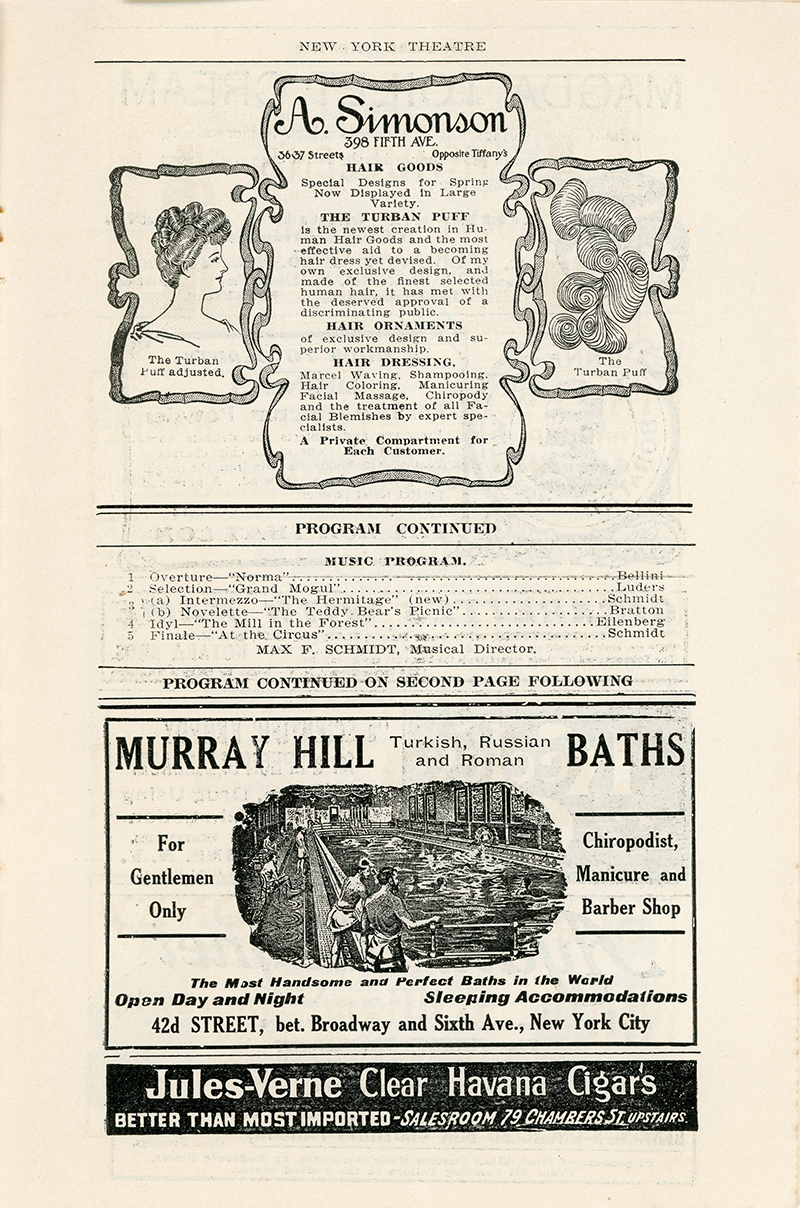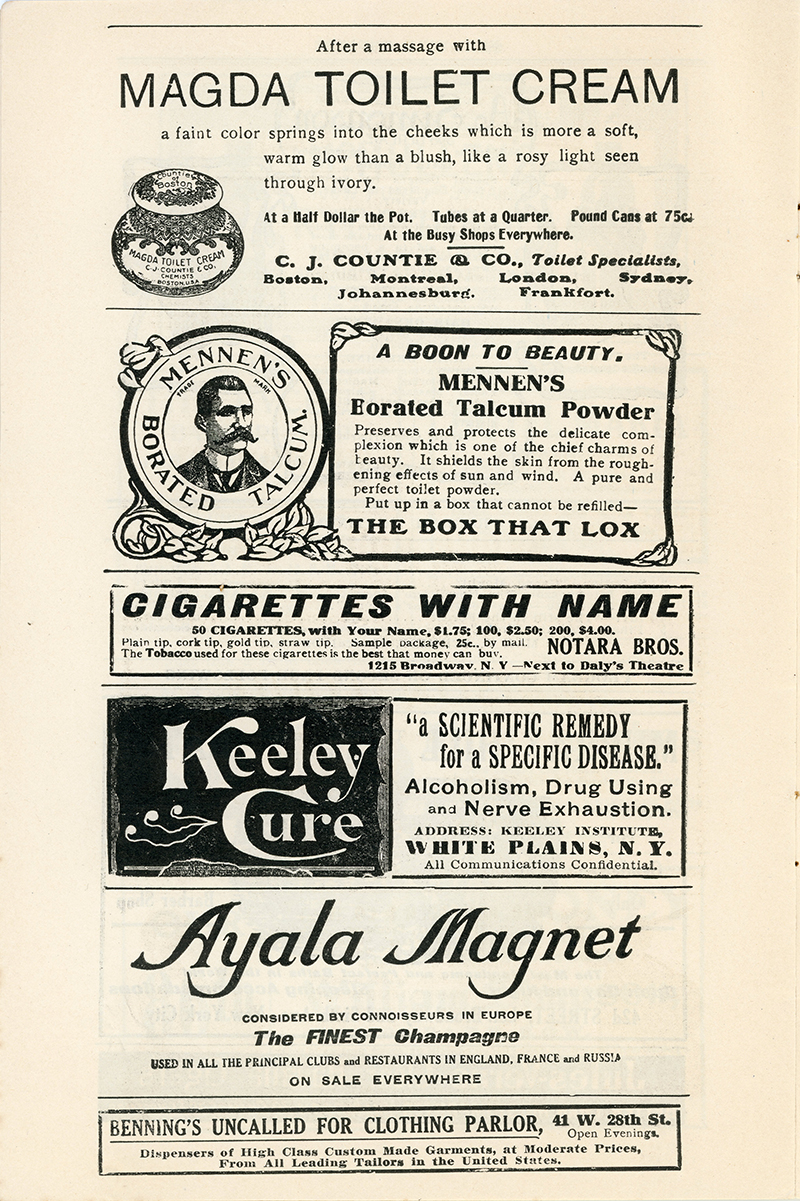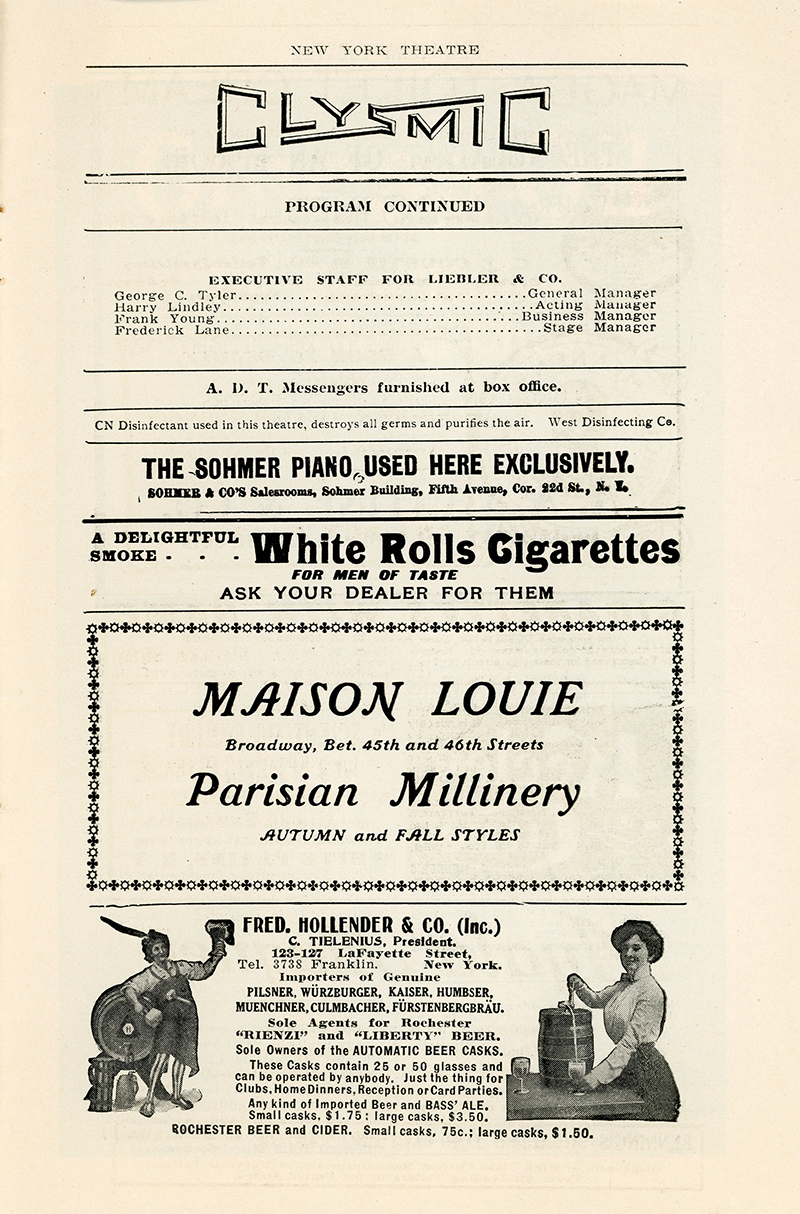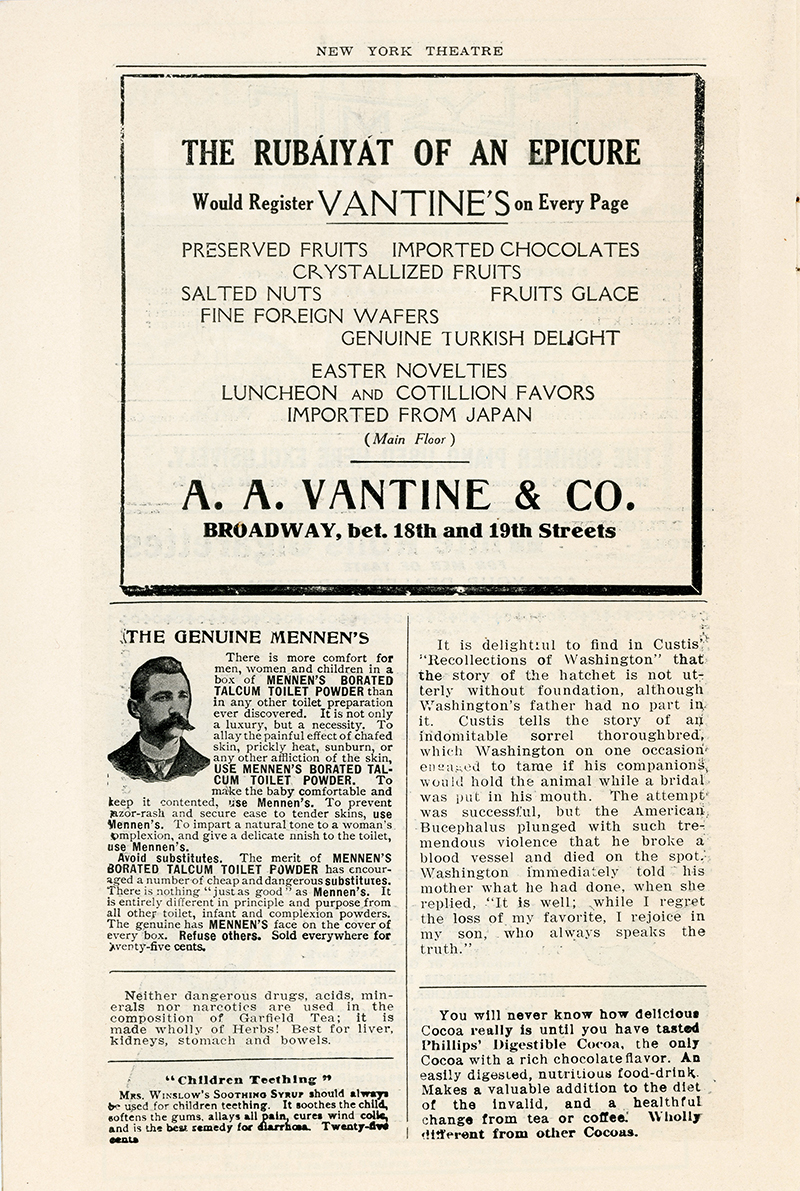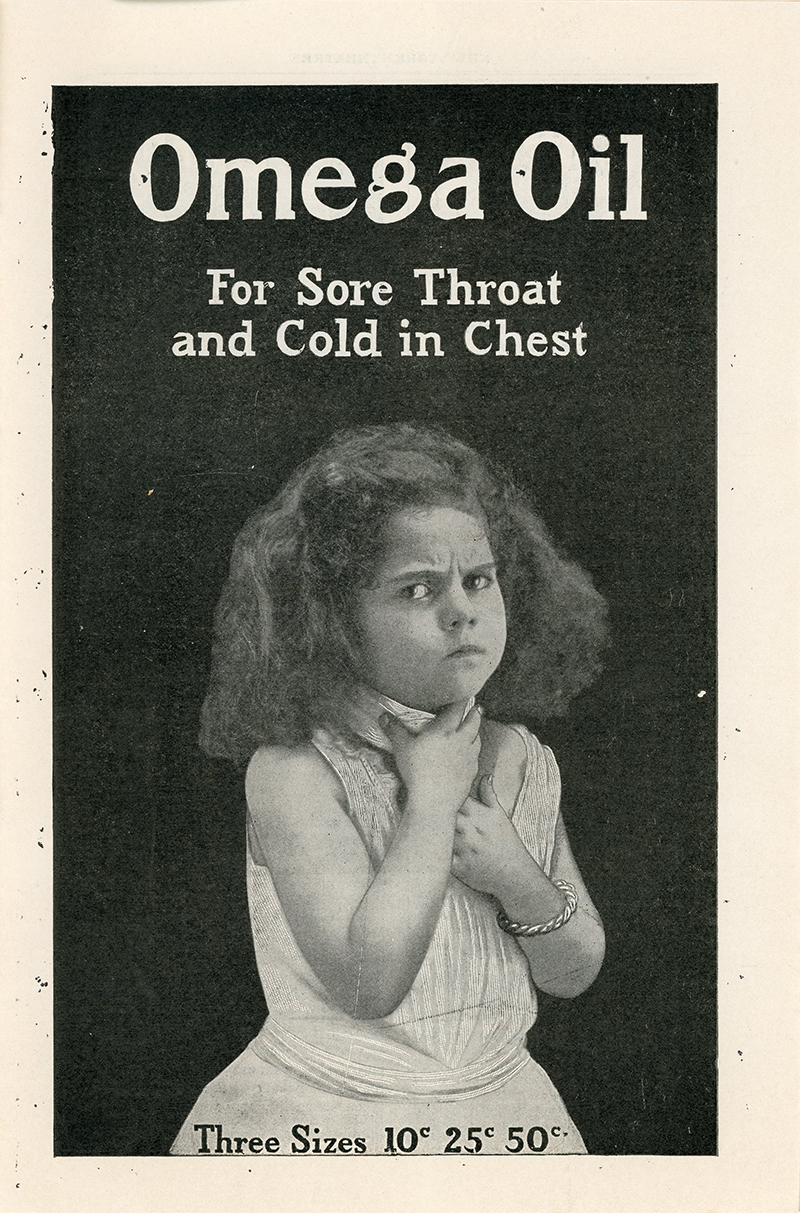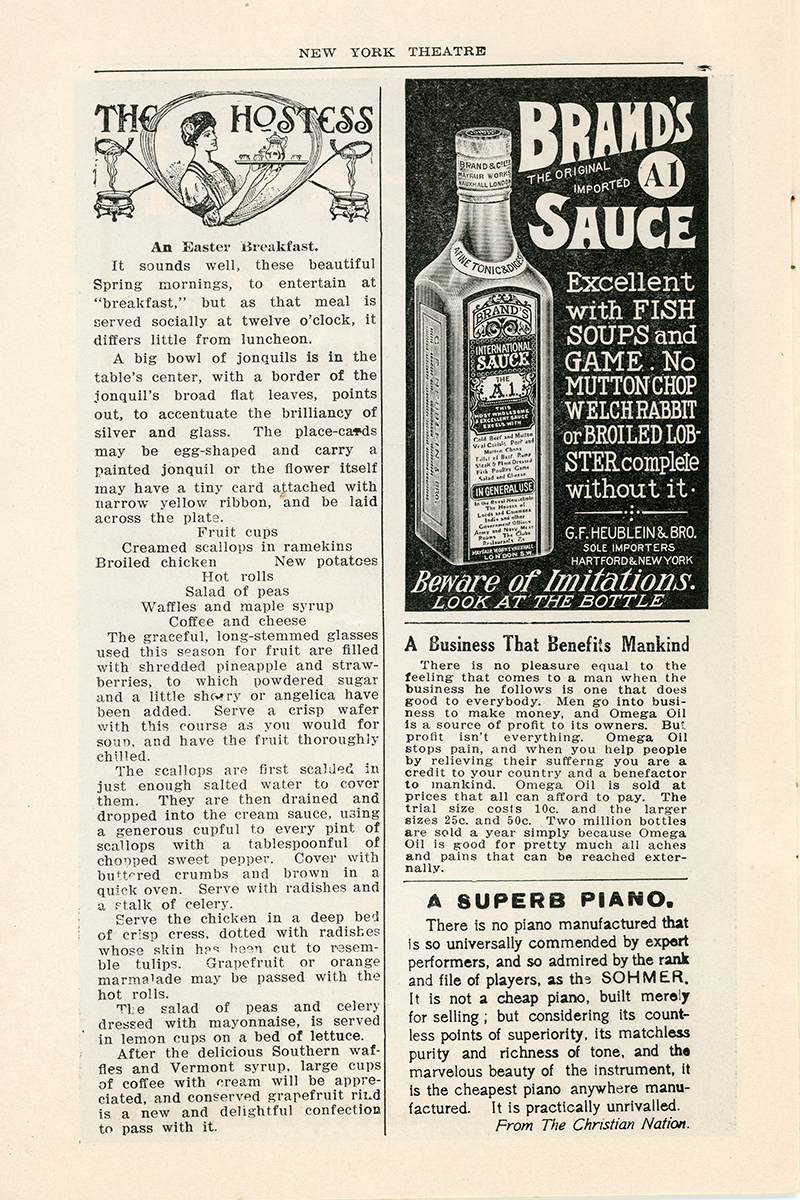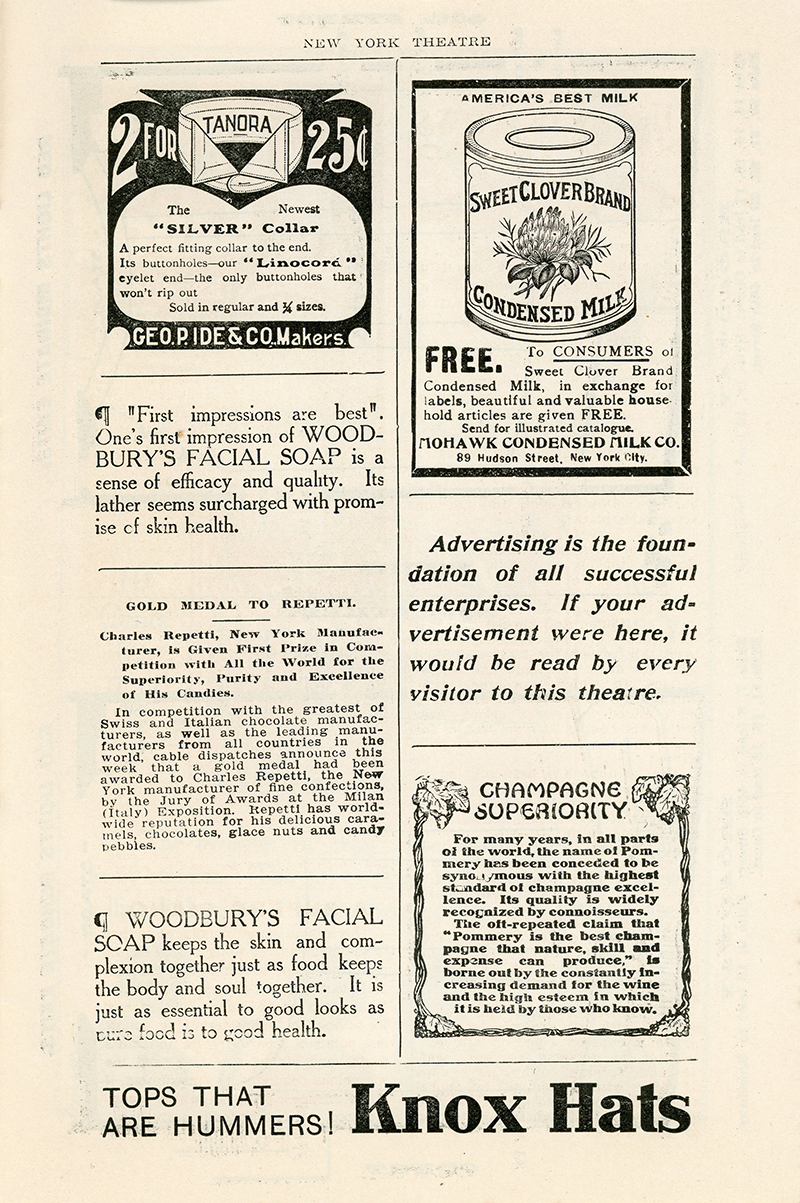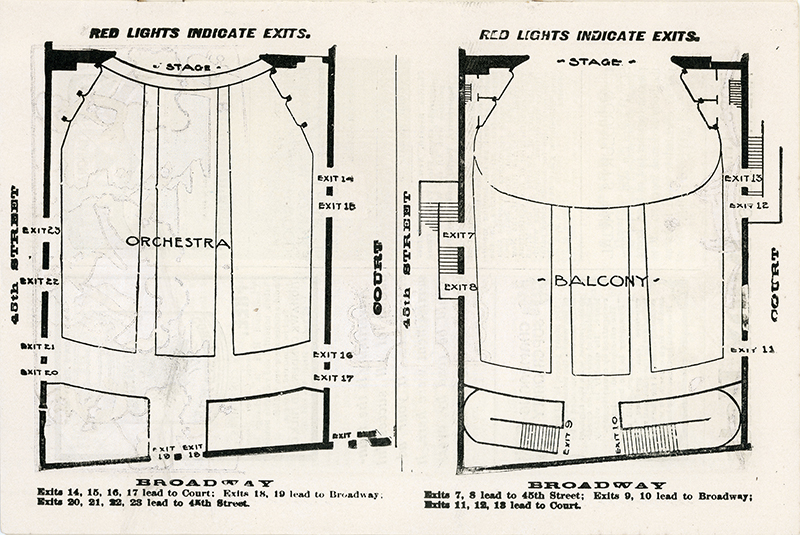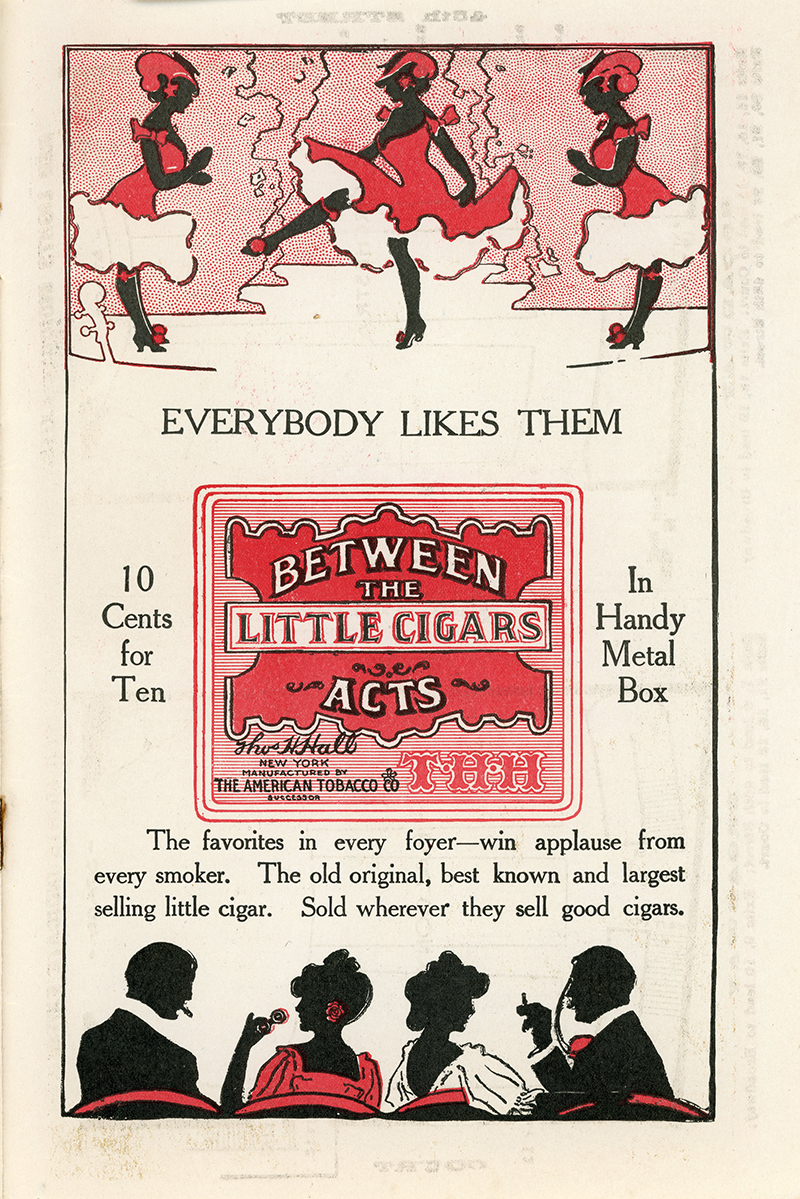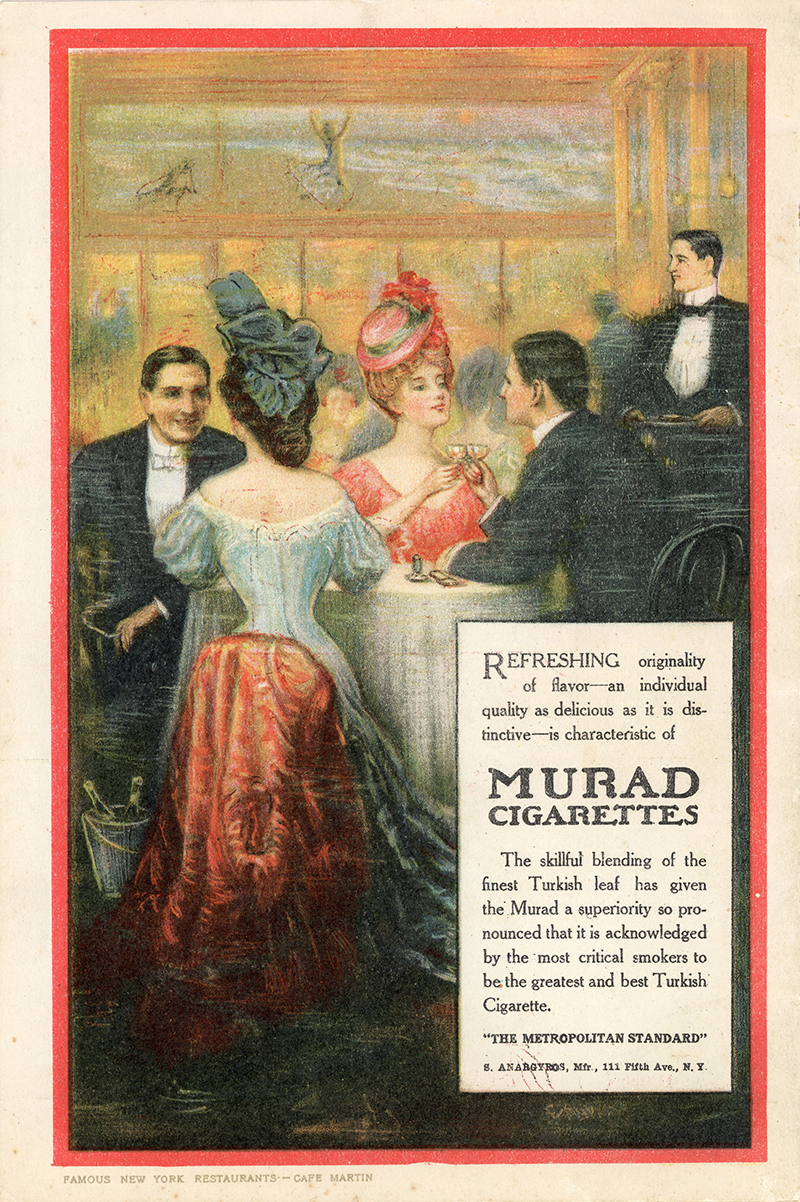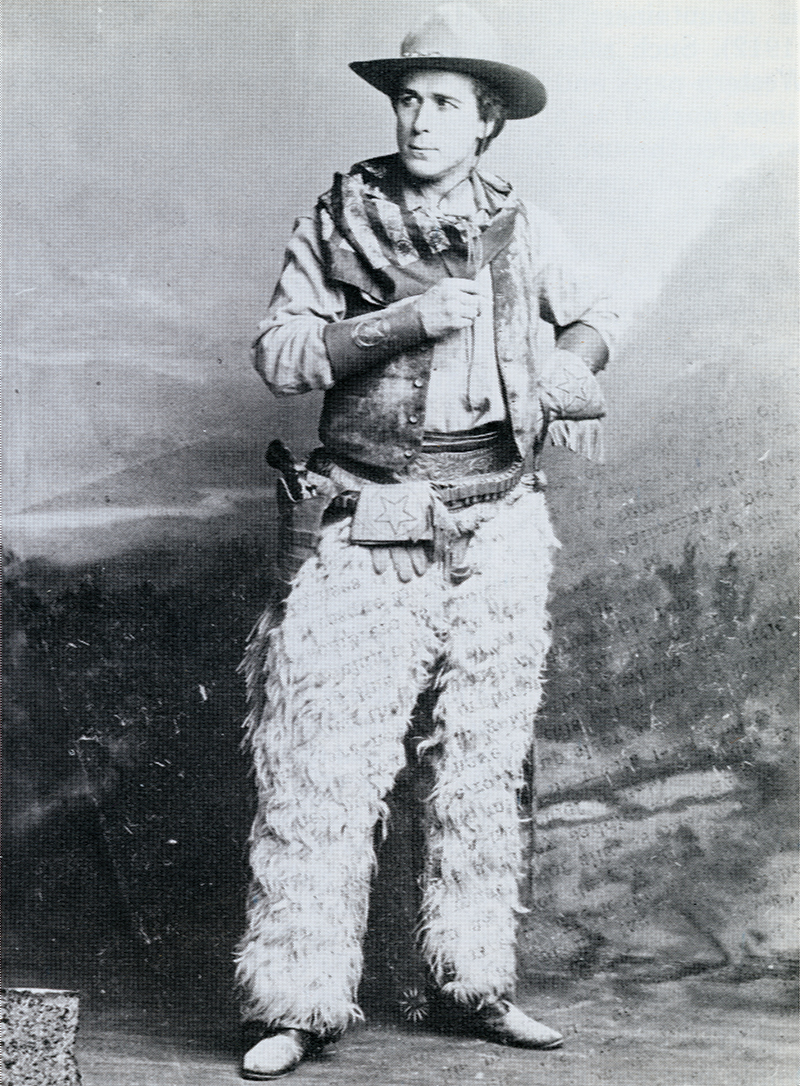|
|
New York Theatre, Week of 3-25-1907
|
Program book for the Liebler & Co. production of "The Squaw Man" at the New York Theatre on Broadway between 44th and 45th streets in Manhattan. Program for the week of March 25, 1907, near the end of the play's initial 2-year production run. Program published by Frank V. Strauss & Co., 108-114 Wooster Street, New York. Marc Klaw and A.L. Erlanger were the managers of the New York Theatre, which was built by Oscar Hammerstein in 1894 as the Lyric Theatre. (A new Lyric Theatre was built by others in 1903 at 42nd Street.) A handwritten note on the bill suggests the original user of the program book had dinner at the (1904) St. Regis Hotel and supper at the new (1906) Knickerbocker Hotel.
Forty-year-old William S. Hart was supplementing his meager acting income by working for a detective agency in New York when he landed a small role in George C. Tyler's 1905 production of Edwin Milton Royle's new melodrama, "The Squaw Man." Hart portrayed the cattle rustler Cash Hawkins — a "mean skunk," in Hart's words, who had taken Nat-U-Ritch (Evelyn Wright), the daughter of a Ute chief, as a bride. (A "squaw man" was typically a white settler in the American West who lived with a native woman, often obtained through kidnap or purchase.) In the story, the protagonist James Winnegate (William Faversham) is wrongly accused of embezzling from an orphan fund and flees to Wyoming where he encounters Hawkins and frees Nat-U-Ritch from his grasp. Hawkins plots his revenge but is shot dead by Nat-U-Ritch. Winnegate is later injured in an accident and is nursed back to health by Nat-U-Ritch, who falls in love with him and bears him a child. Winnegate is ultimately cleared of wrongdoing, but not before the sheriff (William Frederick) discovers the weapon used to kill Hawkins, and Nat-U-Ritch, fearing incarceration and separation from her child, commits suicide.
Rehearsals started in April 1905 and the cast worked out the kinks during a three-week trial production run on the road. It had an almost all-English cast with heavy British accents. "While all excellent actors," Hart writes in his 1939 autobiography, "(they) knew nothing of the types they were playing." ("My Life East and West," pp. 166-169.) "The chaps they had furnished for us all to wear were made out of old rugs and doormats that had been lying around the storehouse," Hart writes. "The legs were fur all the way round like an Eskimo's pants." Tyler authorized Hart to "order chaps, quirts, spurs, etc., which I did by wire, from Pueblo, Colo." "I recall one English actor saying to me: 'I say, old chap, you seem to be a bit of an authority on these uniforms. Why is it some of us wear white fur pants? Is it because we belong to the same regiment?'" When the play opened at Wallack's Theater in Manhattan on Oct. 23, 1905, "Cash Hawkins was the first presentation of a real American cowboy that Broadway had ever seen," Hart boasts, with some justification. Buffalo Bill Cody attended the opening-night performance and was duly impressed; the lawman-turned-sportswriter W.B. "Bat" Masterson later wrote to Hart: "Your portrayal of Cash Hawkins, the cowboy desperado, is exceptionally good, giving as you do to the part the proper atmosphere in every detail" (Davis 2003:48). The Liebler & Co. production of "The Squaw Man" played through May 1907 in New York and on the road, and "for the first time in his life Hart had a few hundred dollars in the bank" (ibid:49). He put $800 down on an $1,800 house in Westport, Conn., for himself, his sister Mary Ellen and their ailing mother. The following season he landed the title role in Owen Wister's "The Virginian" at a salary of $125 per week. Meanwhile, "The Squaw Man" played in London, and in 1914 Cecil B. DeMille made a film version — partially filmed in Newhall — with Dustin Farnum in the lead role. Farnum was a major star when he made the transition from Broadway to Hollywood in 1910. Hart was a fairly late arrival when he came out in 1914. But Hart would soon eclipse Farnum in popularity — although he never did appear in any film version of "The Squaw Man."
LW2836: 9600 dpi jpegs from original program book purchased 2015 by Leon Worden. |
Romeo and Juliet ~1898
Ben-Hur 1899 x8
Ben-Hur Souvenir Album 1900
The Squaw Man
Program Book 1907
The Squaw Man
Postcard 1907
|
The site owner makes no assertions as to ownership of any original copyrights to digitized images. However, these images are intended for Personal or Research use only. Any other kind of use, including but not limited to commercial or scholarly publication in any medium or format, public exhibition, or use online or in a web site, may be subject to additional restrictions including but not limited to the copyrights held by parties other than the site owner. USERS ARE SOLELY RESPONSIBLE for determining the existence of such rights and for obtaining any permissions and/or paying associated fees necessary for the proposed use.
